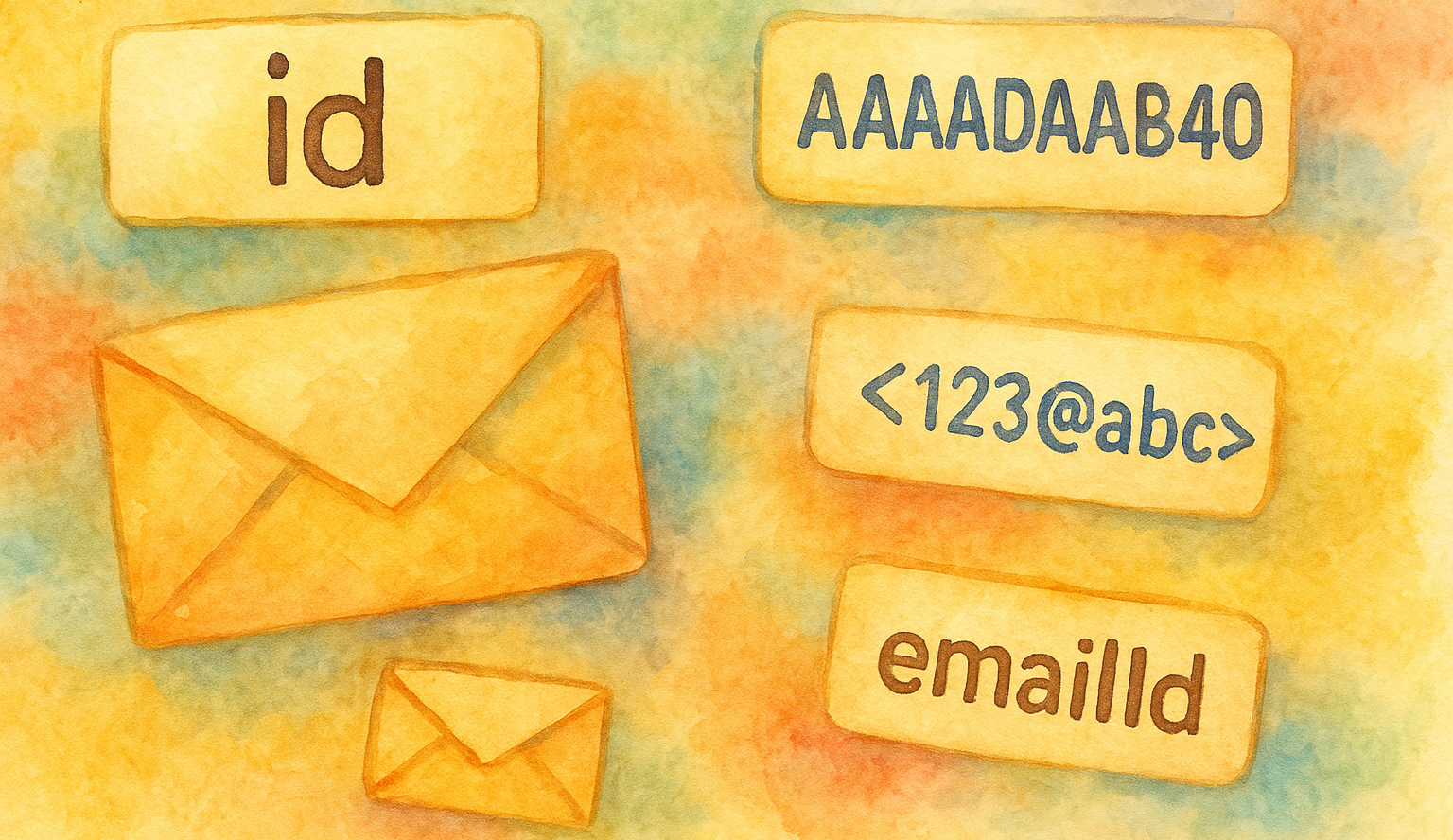IDs explained
Unpack EmailEngine’s various message identifiers—id, uid, emailId, and messageId—and learn when and why to use each one.

If you’ve used EmailEngine for a while, you’ve probably noticed an abundance of different message identifiers: id, emailId, uid, messageId, and—under the hood—a sequence number. They all seem to identify the same thing: an email on an IMAP account. Why so many identifiers? The answer lies in 40 years of IMAP evolution and backward compatibility.
Each identifier serves a distinct role:
id– This is the value you use in EmailEngine’s API requests (for example,"AAAADAAAB40"). It identifies a specific message entry within a particular folder and never changes while that message remains in the same folder. It does not identify the email entity itself. If you move an email to another folder, itsidchanges. An oldidthen points to a non-existent entry, even though the message still exists in your account. Internally, EmailEngine encodes the folder path,UIDValidity, and theuidinto thisid, allowing it to locate the message on the IMAP server.uid– The IMAP Unique Identifier. Within each folder (think of it as a database table),uidis an auto‑incrementing integer primary key. When you move a message between folders, its originaluidis deleted and cannot be reused, so the message receives a newuid. Becauseidembeds theuid, it behaves similarly. Useuidwhen searching message ranges—e.g., a search for"123:456"matches all messages withuidvalues from 123 to 456.emailId– A stable identifier for the email entity itself. Unlikeidanduid, this value never changes, even if you move or copy a message. All instances of the same email share the sameemailId. However, this requires special IMAP extensions supported only by some providers (Gmail, Yahoo, Fastmail, etc.), so it isn’t universally available.messageId– Taken from the email’sMessage-IDheader, this value is intended to be globally unique. In practice, uniqueness isn’t enforced—senders can reuse IDs or omit them entirely. Still, a properMessage-IDis a reliable indicator: missing or duplicated values often signal spam or suspicious duplicates. Some users rely onmessageIdas their primary identifier and discard emails without one.
If you want to search bymessageId, use a header search. For example, to findMessage-ID: <123@abc>, send this request body to the Search For Messages endpoint:
{
"search": {
"header": { "Message-ID": "<123@abc>" }
}
}
- Sequence numbers – Core to IMAP’s protocol, sequence numbers represent a message’s position within a folder. EmailEngine uses sequence numbers internally but does not expose them through the public API.
In summary, use id for most API interactions because it’s stable within a folder and simplifies IMAP lookups. When you need server‑level control (like ranged searches), opt for uid. If your workflow demands a folder‑agnostic identifier, try emailId (where supported). And for global uniqueness—especially when integrating with third‑party systems—consider messageId, keeping in mind its caveats.

